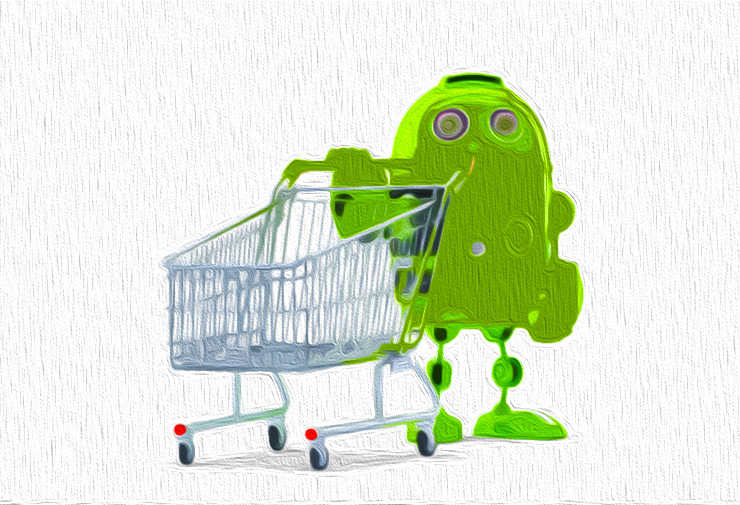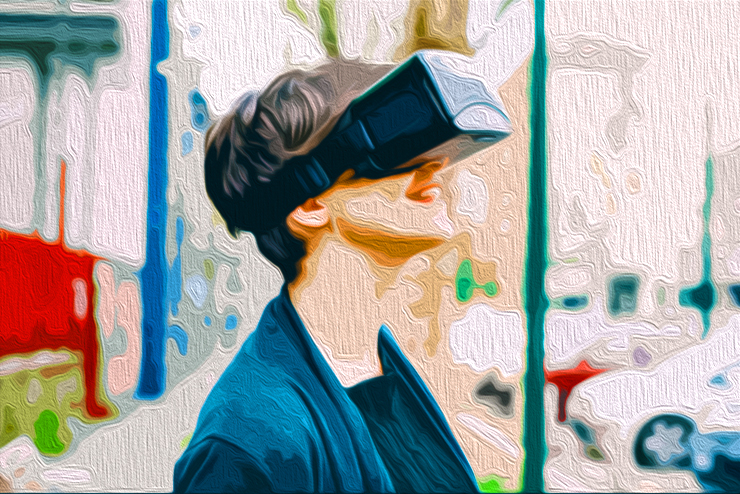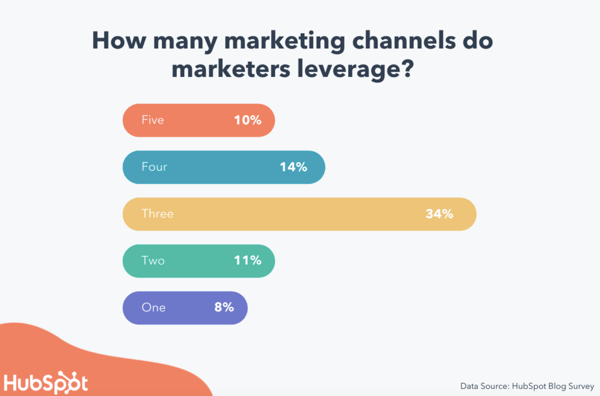
Knowing how to effectively reach your target audience is crucial once you have identified them. Choosing the right combination of marketing channels plays a key role in this process.
Importance of Selecting the Right Marketing Channels
Gone are the days of solely relying on a physical storefront, running a few ads, and waiting for word-of-mouth referrals. Experts now suggest leveraging up to twelve different marketing channels to maximize reach and engagement.
Key Takeaways
- Identify the optimal mix of marketing channels for your business.
- Email, video, paid advertising, and SEO remain effective in 2023.
- Social media, mobile marketing, and interactive events can deliver significant ROI when executed well.
Benefits of Diversifying Your Marketing Channels
Creating detailed marketing personas is crucial to ensure that your content resonates with your target audience. It's essential to understand that different individuals consume content through various channels.
By utilizing a mix of channels, you can broaden your reach and engage with a wider audience. Embracing multichannel and omnichannel strategies is vital to stay abreast of evolving consumer preferences and emerging platforms.
Top Eight Marketing Channels
1. Content Marketing: Compelling written content serves as the foundation of all marketing efforts, driving lead generation and establishing credibility.
2. SEO: Optimizing your website for search engines is crucial to boost organic traffic. Crafting high-quality, keyword-rich content and technical optimization are key strategies.

3. Email Marketing: Despite predictions of its demise, email remains a powerful channel for personalized communication and content delivery to subscribers.
4. Social Media Marketing: Leveraging social platforms enables direct engagement with your audience, fostering relationships and brand awareness.
5. Video Marketing: Integrating video into your marketing mix enhances engagement and can serve as a powerful storytelling tool across various channels.
6. Mobile Marketing: Given the prevalence of mobile devices, adapting your marketing content for smaller screens is essential to cater to on-the-go users.
7. Pay-Per-Click Advertising: PPC can drive immediate brand visibility and sales, but must be approached strategically to maximize ROI.
8. Event Marketing: Hosting interactive events, both physical and virtual, can facilitate audience interaction and provide valuable feedback.

Conclusion
Developing a diverse marketing strategy that incorporates these eight channels can help you effectively engage your target audience and achieve your business goals. Stay ahead of the curve by embracing the latest trends and technologies to drive success in 2023.
Frequently Asked Questions
What are some direct marketing examples?
Direct Marketing Examples include postcards, brochures, flyers, e-mails, etc.
Direct marketing helps reach people from anywhere, at any time. It is the best way to reach customers who already prefer your product or services over others.
You must know what kind of message would appeal most to your target market.
You need to know what your customer wants, and then deliver it.
There are many ways to use direct marketing to promote your business. You could send potential customers catalogs or advertise in local newspaper.
A unique mailing list can be created from your existing customers. If you have good contacts, it is easy to add new subscribers.
Finally, you can ask your current customers if they'd like to receive promotional materials. Some companies offer discounts to those who sign up for special offers.
What are the 4 functions that make up marketing?
Marketing is the art of creating demand for products and services.
It contains information about an organization's products and values as well as the impact they have on customers' lives.
Marketing also stimulates interest in an offering, builds awareness of the offering, and ultimately drives action (or purchase) in response to an invitation to act.
The following are the four functions that marketing has:
- Creating Demand – This includes developing relationships with potential buyers and convincing them that there is value in purchasing your product or service.
- Stimulating Interest- This involves increasing consumer awareness about your service or product.
- Building Awareness – This is the process of making sure that your customers are aware of your product or service, and why they may want to purchase it.
- Driving Action – This is the act of ensuring that consumers purchase your product or service after being made aware.
What are the 7 steps to an internet marketing strategy?
Internet marketing strategies allow businesses to achieve their business goals by using online media. The seven main steps include planning and research, implementation, monitoring as well as analysis, optimization and evaluation. Each step is crucial for internet marketing success and should be done regularly.
- Planning – This step involves identifying and developing a strategy for reaching your target audience. Consider who might purchase your product/service.
- You can understand the needs of your customer and help you choose the best products or services to meet them. It also gives you valuable insights into popular trends and consumer behavior.
- Implementation includes choosing a platform (e.g., Facebook) and determining where to place your ads. Once you've chosen your platforms, ensure they're set up correctly. Also, consider whether to pay per Click or spend money advertising.
- Monitoring – Monitoring ensures you know if your efforts are working. Google Analytics Analytics allows you to track traffic flows, conversions rates, and customer demographics.
- This analysis will allow you to compare your results with benchmarks and past performance levels. This step will guide you on how to improve if there are areas that are not performing well.
- Optimization – Optimizing a site is making changes that increase its effectiveness in attracting visitors. You could, for example, add new features to your site or modify how visitors navigate it.
- Evaluation – Evaluate your campaign's performance to see where it is at the moment. Is there room for improvement? If so, you might not have achieved your goal. If you have any questions, it is important to revisit the situation.
What eCommerce Marketing Strategy Should I Use?
There are three types in eCommerce marketing:
- Direct marketing
- Search Engine Optimization (SEO)
- Social Media Marketing
Direct marketing refers to sending emails directly towards potential buyers. Emails could include coupons, discounts, or special offers. This marketing strategy aims to build customer loyalty.
Search engine optimization helps improve the ranking of your website when you search engines like Google or Yahoo. When your website appears at the top of search results when people type in keywords related to your product, you'll get more visitors.
Social media marketing uses websites such as Twitter, Facebook, Pinterest, Instagram, YouTube, etc. You can connect with your target audience. It is free, simple to set up and highly effective.
Each of these options has its pros, and cons. For example, SEO requires time and effort, while direct marketing doesn't require much effort. However, if you only focus on one method, you won't see the full benefit of eCommerce marketing. Therefore, we recommend combining different types of marketing.
You could, for example, send emails advertising your products to rank high in search engine results. Or you could advertise on social media and then link to your site from those pages.
There are many marketing options for your eCommerce store. Make sure you choose the right work for your business and stick with them. Good luck!
Are there any potential risks in digital marketing?
Digital marketing is not without risks.
For starters, you must ensure you protect your online reputation by being careful about what you say on social networks.
You should also make sure that all your content is original.
In addition, you run the risk of losing control over your brand image online if it isn't closely monitored.
You could also be vulnerable to identity theft if your personal details are used without your consent.
How to Protect your Online Reputation
- Take Care of What You Share on Social Networks
- Ensure that All Content Is Original, and Doesn't Infringe upon Any Other Intellectual Property Rights
- Monitor Your Brand Image
- Strong Passwords
- It is best to not divulge personal information without consent
- Report Unauthorized Activities Immediately
- Don't Post Photos Of Yourself Or Others In A Disturbing Way
- Never divulge your social security number
- Keep up with the latest news
- Stay Away From Scams
- Secure Password
- Always keep an eye out for new updates
- Don't share too many details
- Don't give out your credit card number without being vigilant
- Don't send money via E-mail
- Look out for fake websites
- Bad reviews can damage your business.
- You should regularly check your credit reports
- Be vigilant about your privacy settings
- Ask someone who is familiar with you before sharing your thoughts.
What is an example search engine marketing?
Search Engine Marketing (SEM), is an essential component of digital marketing. SEM includes pay-per-click advertising, sponsored links, display ads, paid inclusion, search engine optimization (SEO), social media marketing, video marketing, mobile advertising, etc.
Statistics
- In 2017, 34% of marketers cited co-branding as the most effective way to increase the number of email subscribers. (influencermarketinghub.com)
- This allows us to deliver CPCs that are 80% less than average and CTRs 4-5 times higher than average. (marketinginsidergroup.com)
- Companies that use personalization are seeing revenue increases ranging from 6-10%. (blog.hubspot.com)
- A poll earlier this year found that 14% of older Gen Z's had bought an item in the previous six months based on an influencer's recommendation. (influencermarketinghub.com)
- According to statistics, 60% of online shoppers worldwide actively search for coupons before purchasing from a virtual shop. (influencermarketinghub.com)
External Links
neilpatel.com
hubspot.com
influencermarketinghub.com
blog.hubspot.com
How To
How to get your Google Digital Marketing & E-commerce Professional Certificate
Google offers a free online course, Search Engine Optimization: Beginners. This is a fantastic way to learn about optimizing your website for search engines, such as Google.
The course covers important SEO topics, such as page titles and meta tags, internal linking, site speed, and internal linking. These lessons will improve your website's performance if it already exists.
A certificate of completion will be issued to you after the course is completed. This certificate can be used for two years to allow you to include “SEO” on your LinkedIn profile.
You also earn 10 CPE credits when you complete the course. These credits are accepted at most colleges and universities.
Google Certified Partner (GCP), a paid certification program, is also offered by Google. Candidates must pass a rigorous exam to become GCP certified and also submit proof of relevant experience.
————————————————————————————————————————————–
By: 6648
Title: 8 Effective Marketing Channels to Focus on by 2023
Sourced From: internetlib.org/eight-different-marketing-channels-you-can-leverage-in-2023/
Published Date: 4/20/2023 7:26:53 PM
